Nikolai Luzin, in full Nikolai Nikolaevich Luzin (also transliterated as Lusin and Louzine), the founder and head of the Moscow mathematical school for function theory, was born in Tomsk. He graduated from the Tomsk Gymnasium in 1901 and from Moscow State University (MSU) in 1908. In 1910, Luzin passed the master’s examinations; having delivered two test lectures, he became Privat-Docent of the Department of Pure Mathematics (MSU). In the same year, Luzin was sent to Goettingen and Paris to improve his mathematical skills.
Having returned to MSU (1914), Luzin supplemented his basic courses with elective lectures. Their attendees quickly formed a seminar. In the 1920s, seminar participants were young Luzin’s students (later outstanding mathematicians), namely, P.S. Alexandrov, A.N. Kolmogorov, M.A. Lavrent’ev, P.S. Novikov, A.I. Khinchin, V.V. Stepanov, and others. Luzin’s seminar became known as Luzitania and subsequently grew into the famous Moscow mathematical school.
In 1930, Luzin left MSU and joined the Central Aerohydrodynamic Institute (TsAGI). In 1935, he returned to MSU.
In 1936, Luzin was accused of anti-Soviet activities and declared an “enemy in the Soviet mask.” E. Kolman, a Czech internationalist, a talentless mathematician, and a Marxist philosopher, initiated the persecution of the greatest mathematician. In 1936, Kolman headed Department for Science at the Moscow Committee of the Communist Party of the Soviet Union (Bolsheviks) and later immigrated to Sweden. He was actively supported by L.Z. Mekhlis, Pravda’s Editor, by personal permission from Stalin. Pravda published a series of articles with absurd accusations against Luzin (deliberately harming the development of mathematics in the USSR).
The Commission on “Luzin’s case” at the USSR Academy of Sciences worked under the chairmanship of Academician G.M. Krzhizhanovsky, Vice-President of the Academy. Unfortunately, many Luzin’s students betrayed their teacher. The Presidium of the USSR Academy of Sciences fully supported all the accusations against Luzin but unexpectedly took a very gentle decision (presumably, on Stalin’s instructions): Luzin was warned that without a complete swing-round in his behavior, he would be expelled from the academic ranks.
Nevertheless, Luzin found himself without a job and means of subsistence. In 1939, V.S. Kulebakin hired Luzin at the Institute of Automation and Remote Control (IARC), the USSR Academy of Sciences. The outstanding mathematician worked there until his last days.
Luzin authored fundamental works on the metric theory of functions, the theory of complex-variable functions, descriptive set theory, and mathematical logic. Also, he extended general concepts of descriptive set theory to various branches of mathematics.
Luzin’s research on the matrix theory of differential equations is directly connected with automatic control. He showed that the Shchipanov compensation conditions are necessary and sufficient for the solution of a system of differential equations with constant coefficients to be independent of an arbitrary analytic function on the right-hand side of the system. Luzin called them the absolute invariance criterion and introduced the concept of invariance within a given accuracy. Subsequently, the branch of general control theory related to the Shchipanov conditions was called the invariance theory.
Luzin also conducted significant studies of the method for solving the secular equation (proposed by Academician A.N. Krylov) and the approximate method for integrating differential equations (proposed by Academician S. A. Chaplygin).
Luzin’s works are rich in content, deeply analyze the basic concepts of mathematics, and generalize the results; his new methods are diverse and their presentation is elegant. No doubt, Luzin is among the well-known scientists in the global community.
Luzin’s main books are as follows:
- Integral’noe ischislenie (Integral Calculus), Moscow: Vysshaya Shkola, 1960. — 415 p.;
- Sobranie sochinenii. T.3 (Collected Works. Vol. 3), Moscow: the USSR Academy of Sciences, 1959. — 505 p.;
- Sobranie sochinenii. T.2 (Collected Works. Vol. 3), Moscow: the USSR Academy of Sciences, 1958. — 744 p.;
- Differentsial’noe ischislenie (Differential Calculus), Moscow: Sovetskaya Nauka, 1955. — 476 p.;
- Lektsii ob analiticheskikh mnozhestvakh i ikh prilozheniyakh (Lectures on Analytical Sets and Their Applications), Moscow: Gostekhizdat, 1953. — 359 p.
- Sobranie sochinenii. T.1 (Collected Works. Vol. 1), Moscow: the USSR Academy of Sciences, 1953. — 400 p.;
- Teoriya funktsii deistvitel’nogo peremennogo (Theory of Real-Variable Functions), Moscow: Uchpedgiz, 1948. — 318 p.;
- Kurs differentsial’nogo i integral’nogo ischislenii. Chast’ 2. Integral’noe ischislenie (A Course on Differential and Integral Calculi. Part 2: Integral Calculus), Moscow: Gostekhizdat, 1942. — 240 p. (coauthor V. Grenvil’);
- Kurs differentsial’nogo i integral’nogo ischislenii. Chast’ 1. Differentsial’noe ischislenie (A Course on Differential and Integral Calculi. Part 1: Differential Calculus), Moscow: Gostekhizdat, 1942. — 410 p. (coauthor V. Grenvil’).
Many of them are presented in the Institute’s database:
https://www.ipu.ru/d7ipu/books_library_grid?combine=Лузин
The list of journal papers by Luzin is available at Math-Net.Ru:
https://www.mathnet.ru/php/person.phtml?option_lang=eng&personid=22088
Publications about N.N. Luzin
| 1. | P. L. Ul’yanov, Nikolai Nikolaevich Luzin (on the 100th Anniversary of His Birth), Uspekhi Mat. Nauk, 40:3(243) (1985), 3—5; Russian Math. Surveys, 40:3 (1985), 1—4. |
| 2. | Nikolaj Nikolaevich Luzin (on His 100th Birthday), Vestnik Moskov. Univ. Ser. 1. Mat. Mekh., 1983, no. 6, 3. |
| 3. | M. A. Lavrent’ev, Nikolai Nikolaevich Luzin, Uspekhi Mat. Nauk, 29:5(179) (1974), 177—182; Russian Math. Surveys, 29:5 (1974), 173—178. |
| 4. | P. I. Kuznetsov, Nicolai Nicolaevich Luzin (on the Ninetieth Anniversary of His Birth), Uspekhi Mat. Nauk, 29:5(179) (1974), 197—210; Russian Math. Surveys, 29:5 (1974), 195—208. |
| 5. | V. S. Kulebakin, Academician Nikolai Nikolaevich Luzin, Avtomat. i Telemekh., 11:2 (1950), 81—82. |
| 6. | Nikolai Nikolaevich Luzin (on His 60th Birthday), Uspekhi Mat. Nauk, 1:1(11) (1946), 226—228. |
Also, see the Wikipedia page devoted to Luzin:
https://en.wikipedia.org/wiki/Nikolai_Luzin
